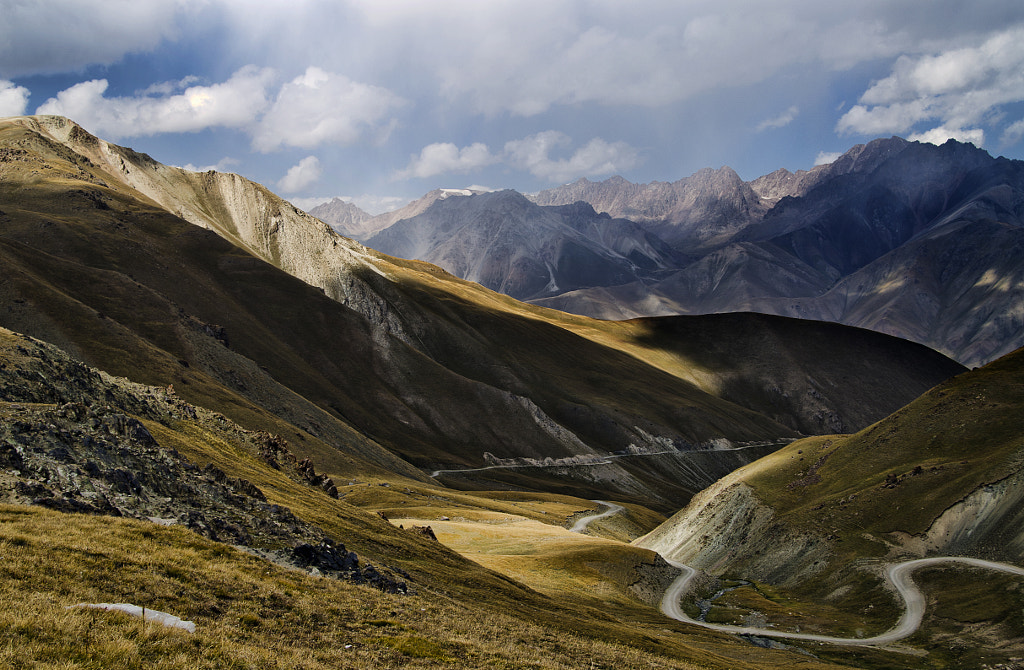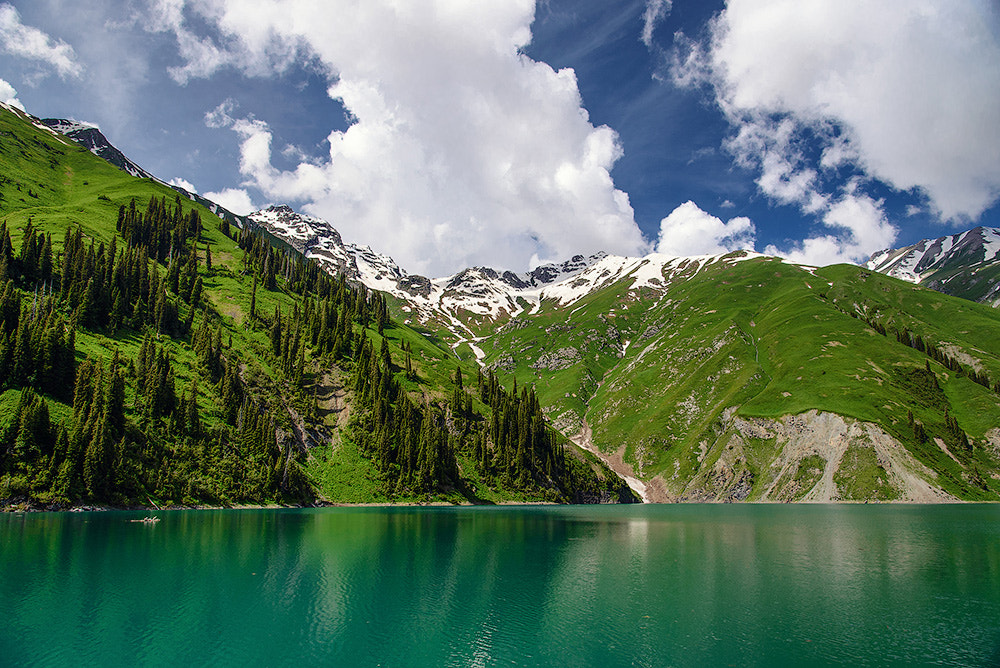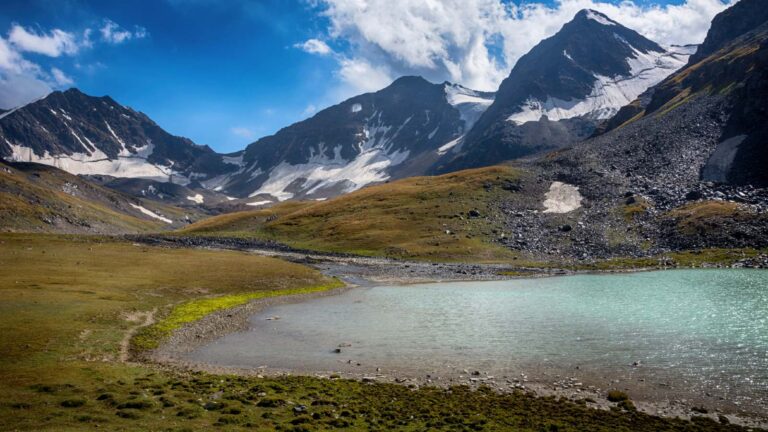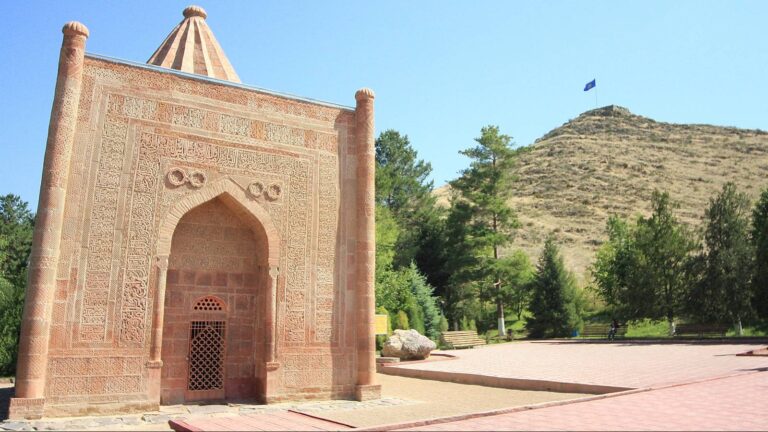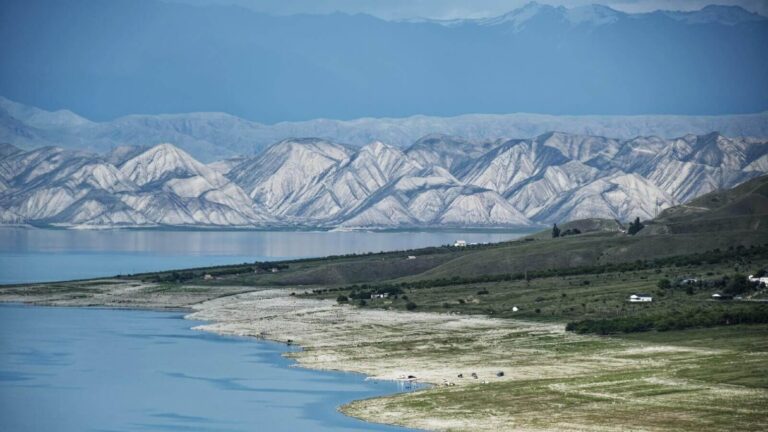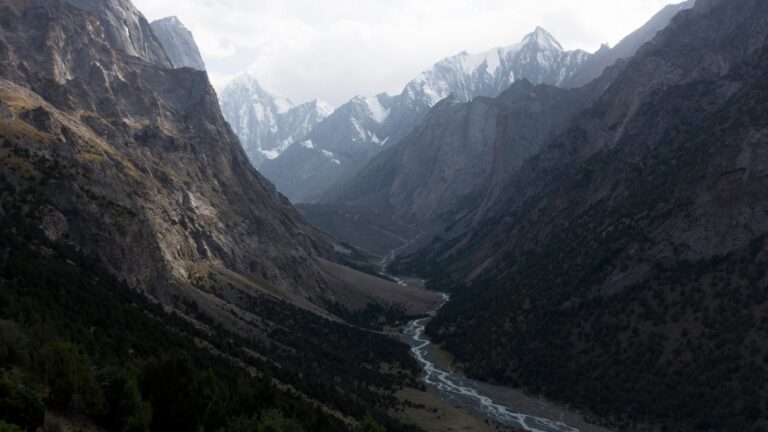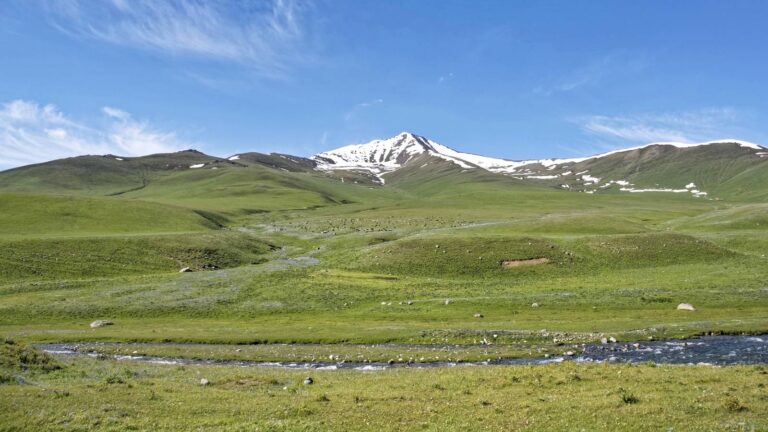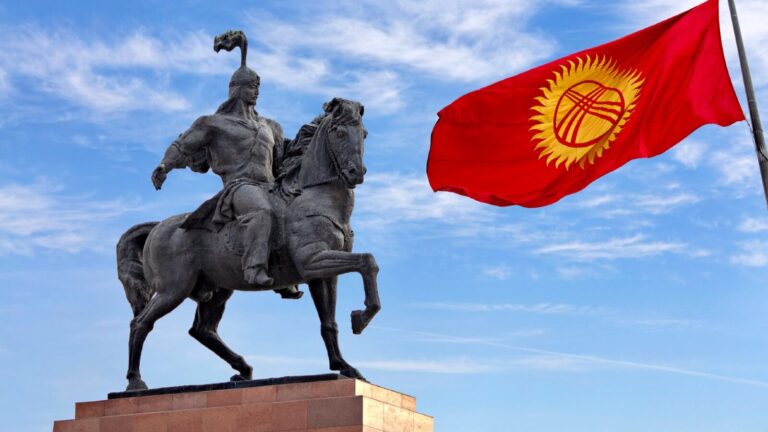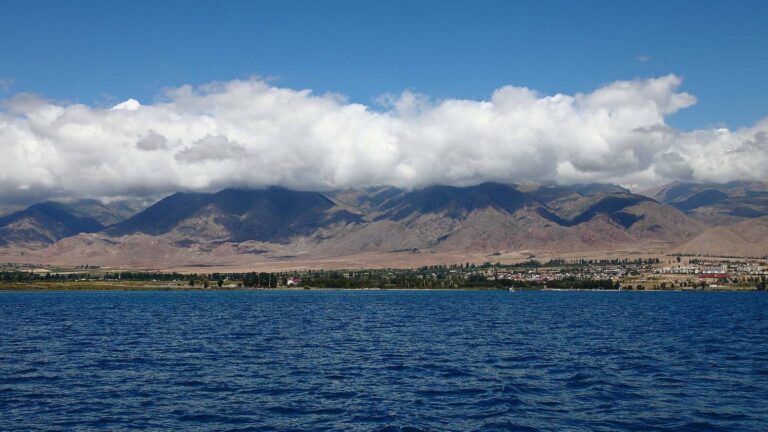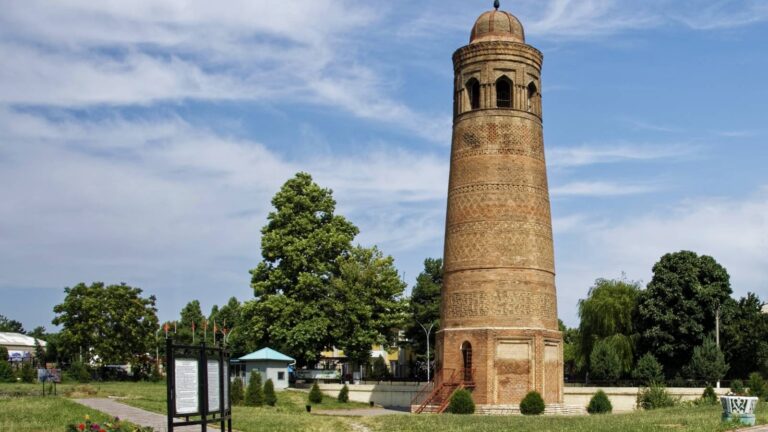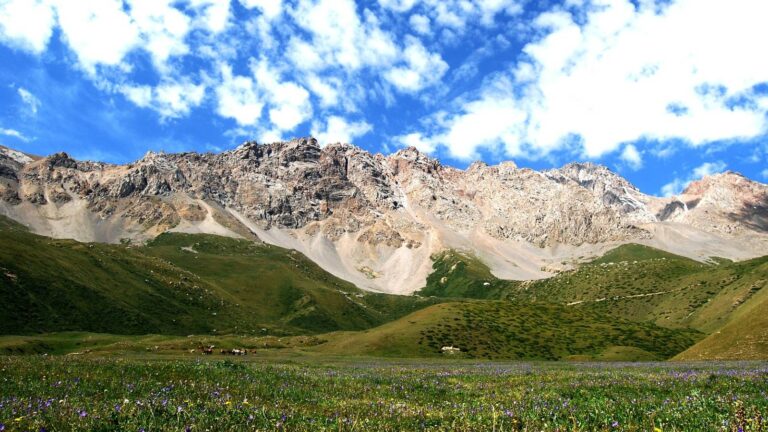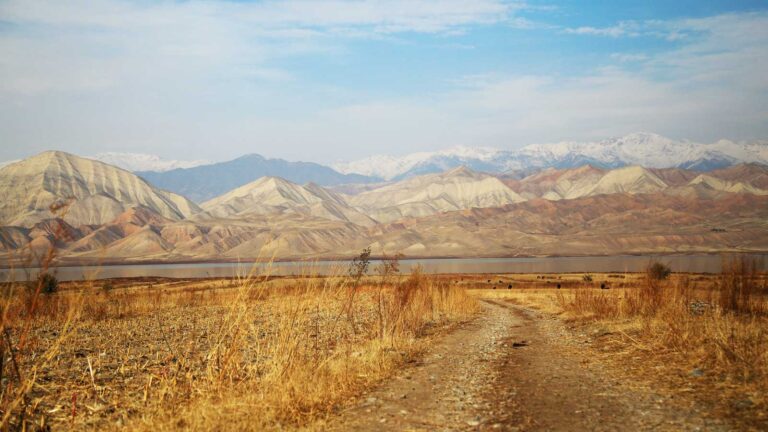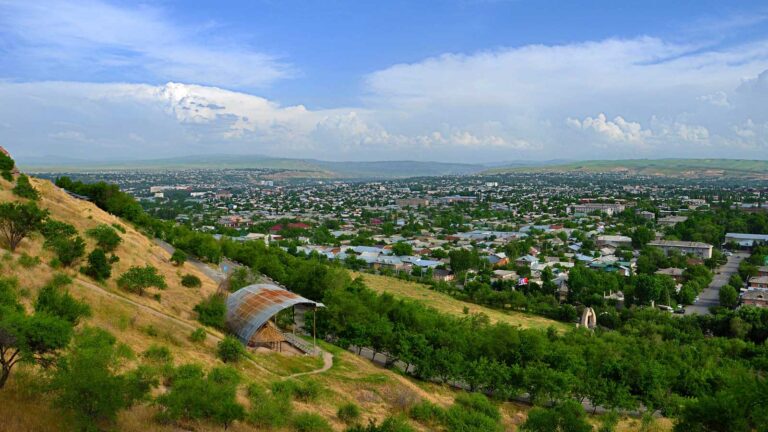There are no direct flights to the city of Talas from Bishkek. There is no railway connection with Talas either. If one is not happy with the bus, taxi from the Western Bus Station would be the best option.
By Car
The most convenient route is through Kazakhstan. Those who are not afraid of steep serpentines can set off through the Too-Ashuu pass, turning north from the main Bishkek-Osh road, after crossing the Suusamyr valley. Buses leave daily from the Western Bus Station. Travel time is about five hours.
Key Attractions in the Talas Region
The vast Talas Valley is surrounded on all sides by mountains with gorges full of amazing landscape, deep mountain lakes and various mountain vegetation. It will be comfortable for both experienced travelers and those who just want to relax and enjoy the mountain nature.
Besides the mountains, Talas Region has many cultural attractions, as it is a historical region of secluded residence of the Kyrgyz. The vast historical complex Manas Ordo cherishing the memory of the national hero, Manas, is here.
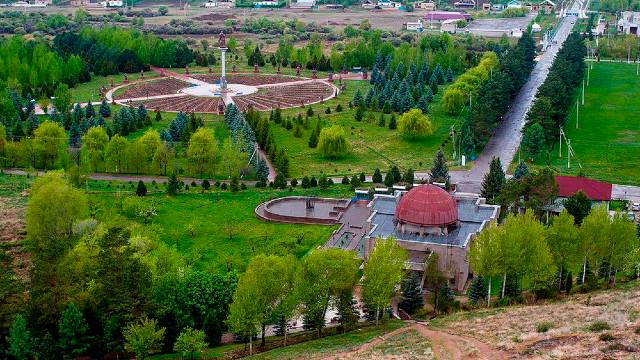
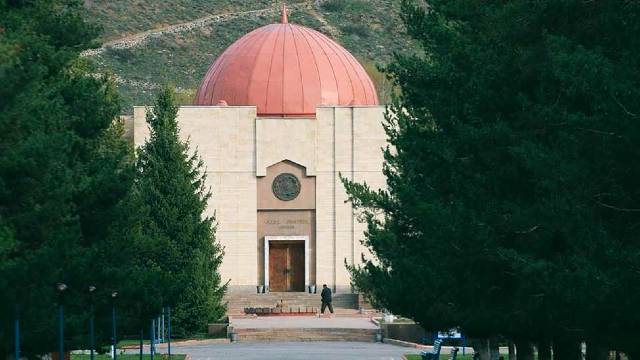
Top landmarks of the region are:
- Besh-Tash reserve
- Manas Ordo Historical complex
- Besh-Tash Lake
- Kirov reservoir
Talas is famous for being the birthplace of the legendary hero Manas, the great batyr, who united the Kyrgyz people and led the struggle for their independence, the hero of the epos of the same name Manas. The Talas Valley was also the ground of the 751 battle between the Abbasid Caliphate and the Tuegesh Kahanat against the Tang Chinese army. This important battle took place on the banks of Talas.
In 1877, Talas city was only a small village, named Dmitryevskoye, founded by Russian and Ukrainian immigrants. Initially, there were about 100 houses of settlers, who mainly lived from farming and agriculture.
Talas, often called the “heart of Kyrgyzstan” is considered to be the cradle of cultural tourism. Go there to understand the history and culture of Kyrgyzstan.
The cuisine of the Talas Region is known for its Talas gulchetai. Some draw a parallel between beshbarmak and gulchetai, since both dishes are prepared by the same ingredients, but in different ways. For a gulchetai, meat is not boiled, but fried, the dough is cut into large squares. In addition, potatoes and other vegetables are added. In order of importance, gulchetai follows beshbarmak and plov.
The total area of the Talas Region is 11.4 thousand km², or about 6 percent of the territory of the Kyrgyz Republic. Talas Region is divided administratively into 4 districts, 37 rural communities (aiyl okmotus) and a city of regional significance, Talas.
The climate is continental and dry. In Talas, the summers are warm, dry, and mostly clear and the winters are freezing, snowy, and partly cloudy. The highest average monthly temperature is observed in July and is +30, the lowest average monthly temperature is in January -9.6 ° С. The annual rainfall is 300-400 mm.
The territory of Talas Region is favorable for some economy sectors. Animal husbandry is the main sector of agriculture. The population is engaged in sheep-breeding, cow-breeding, horse-breeding and receiving products from them.
Agriculture is well developed in the region. Grain, tobacco, potato, vegetables are cultivated here, in the recent years sugar beet and oil plant have been grown. The industry in the region is poorly developed in comparison with the national level.

